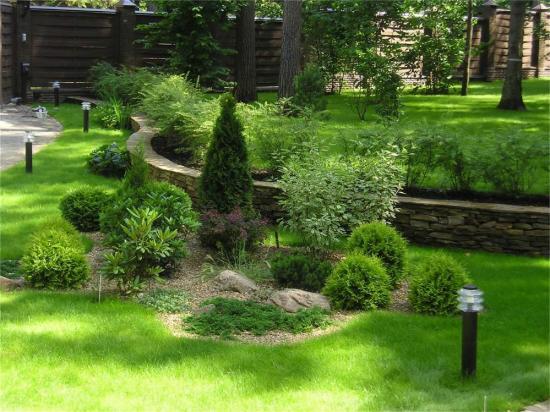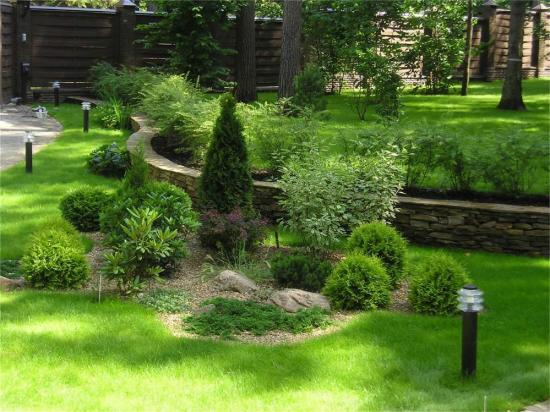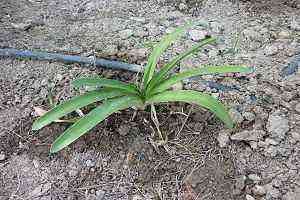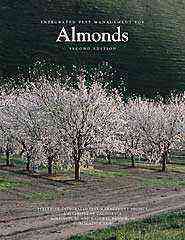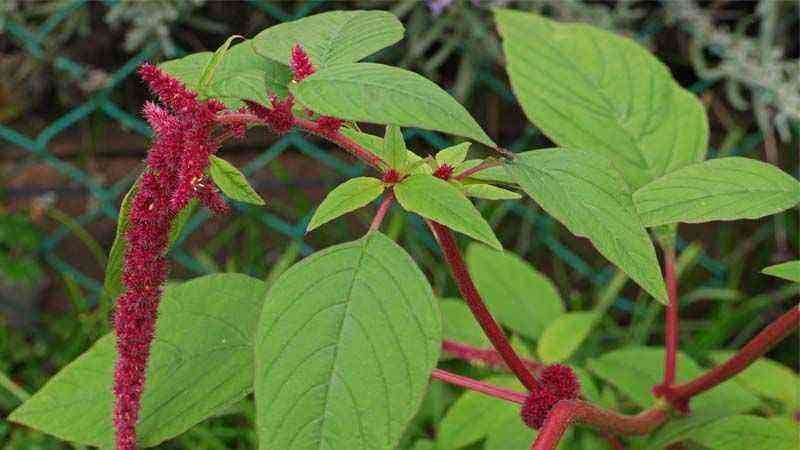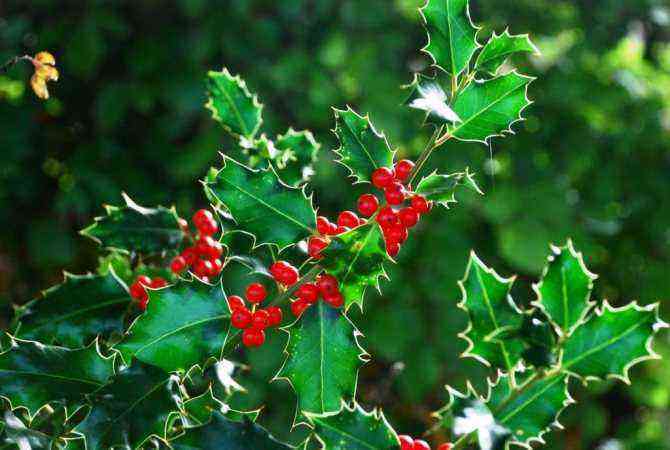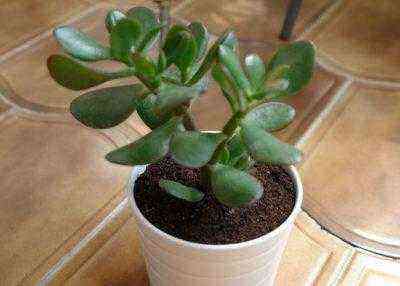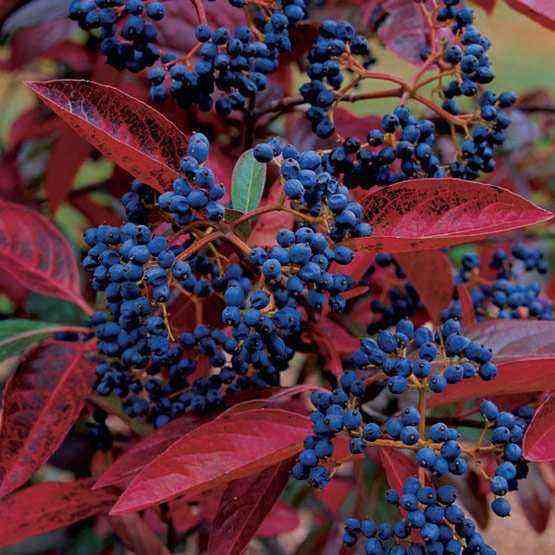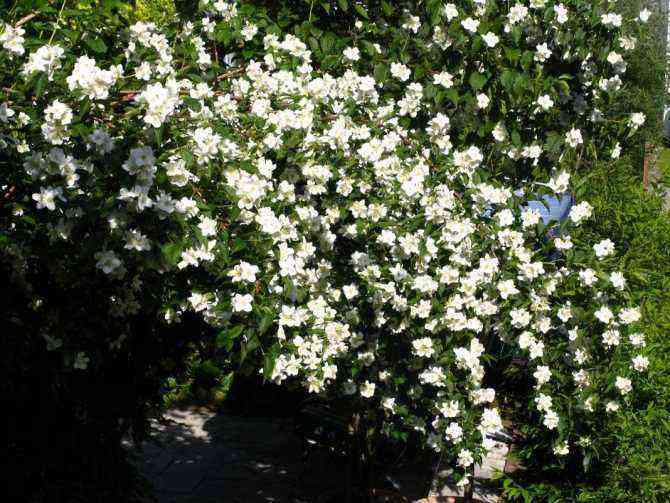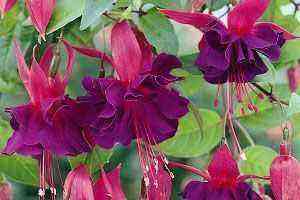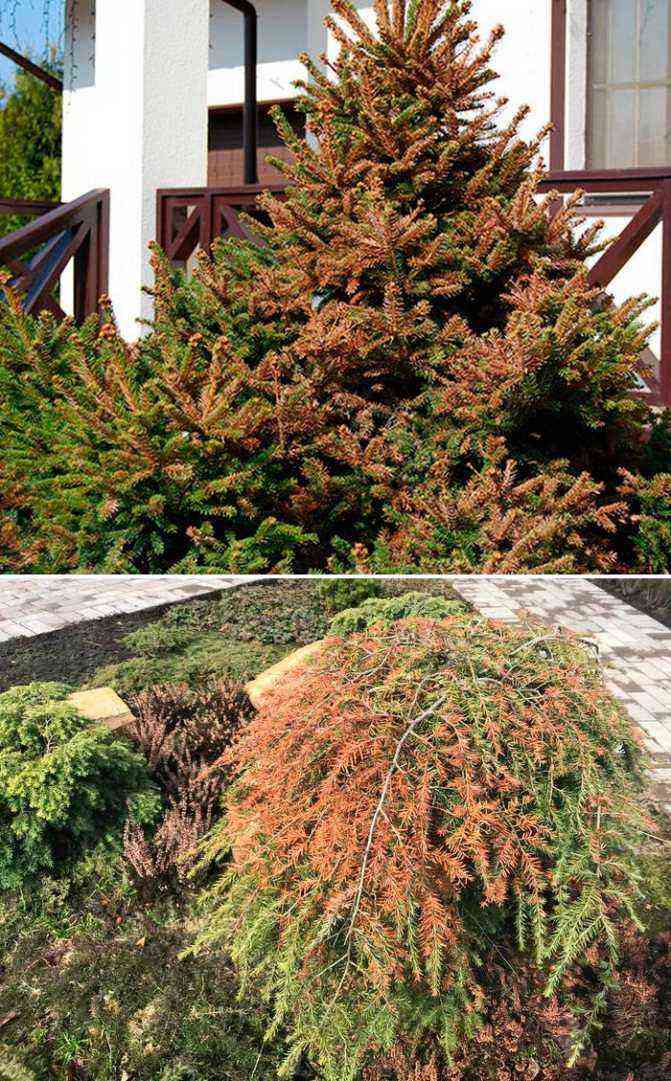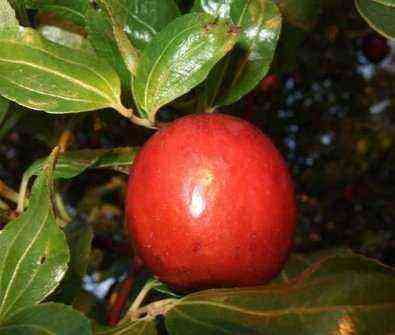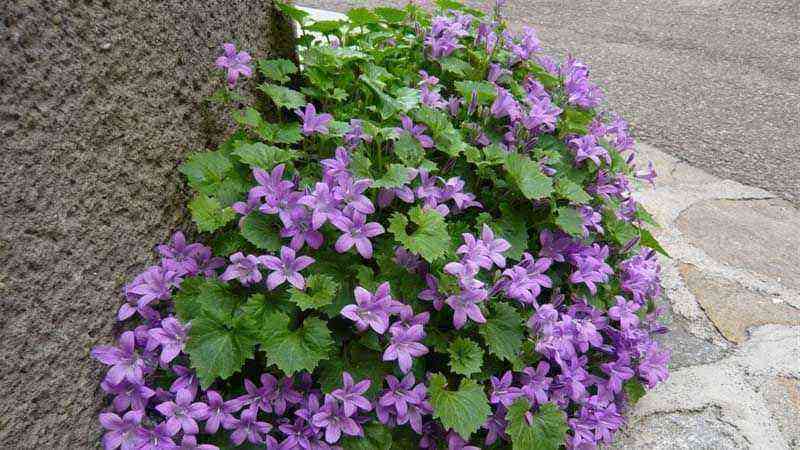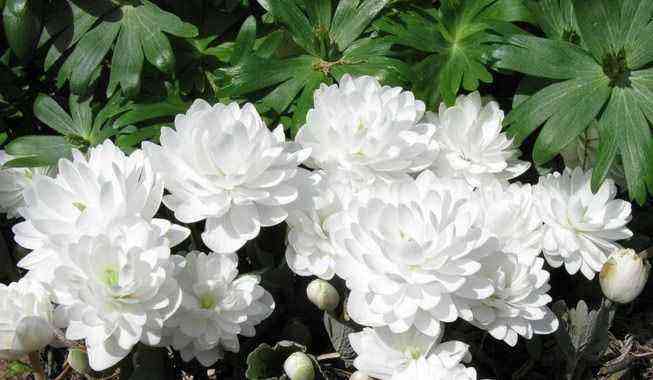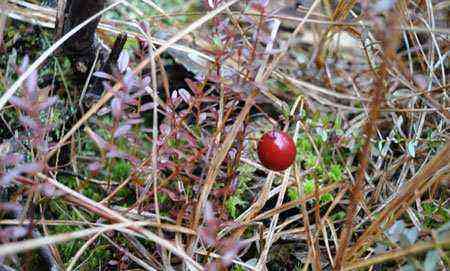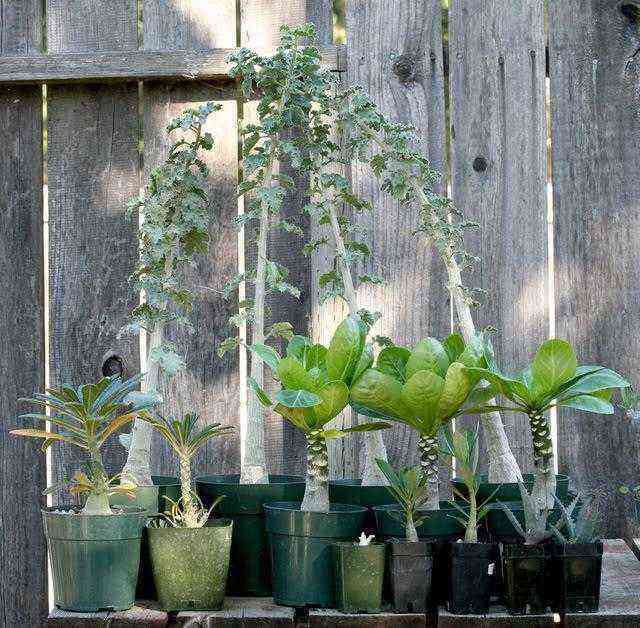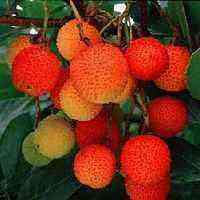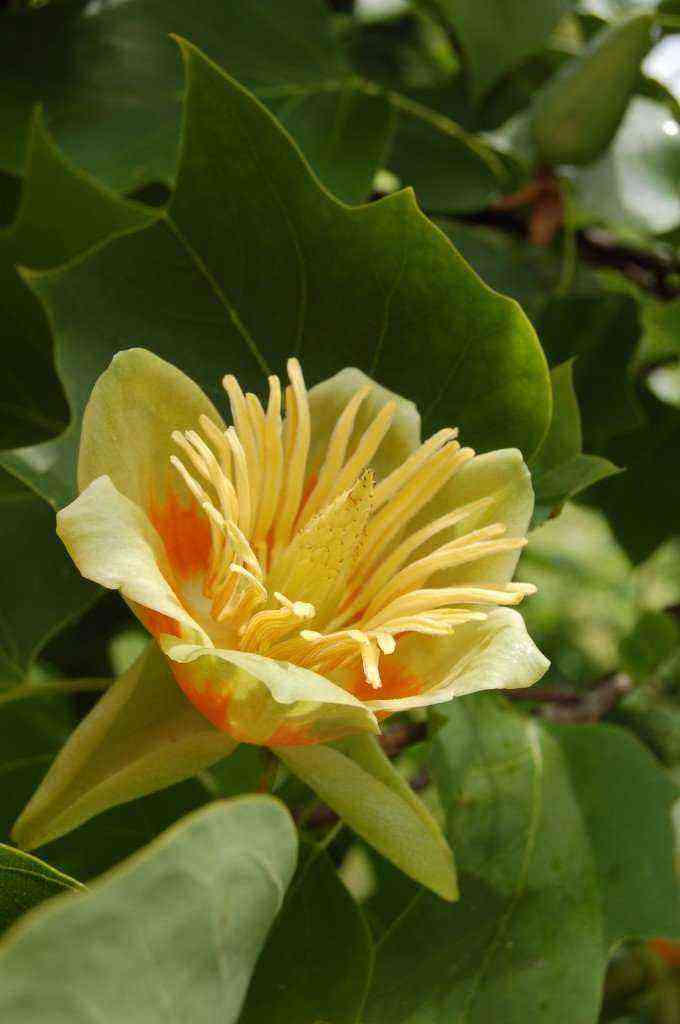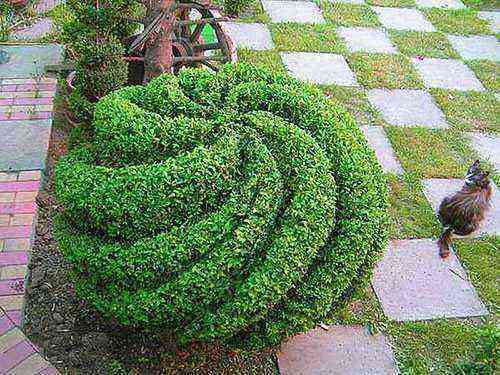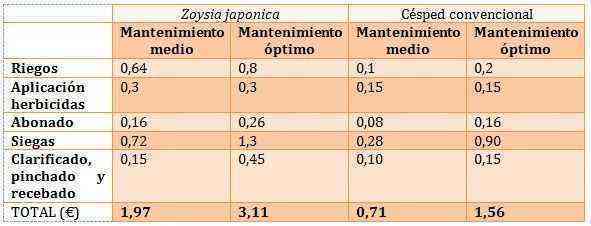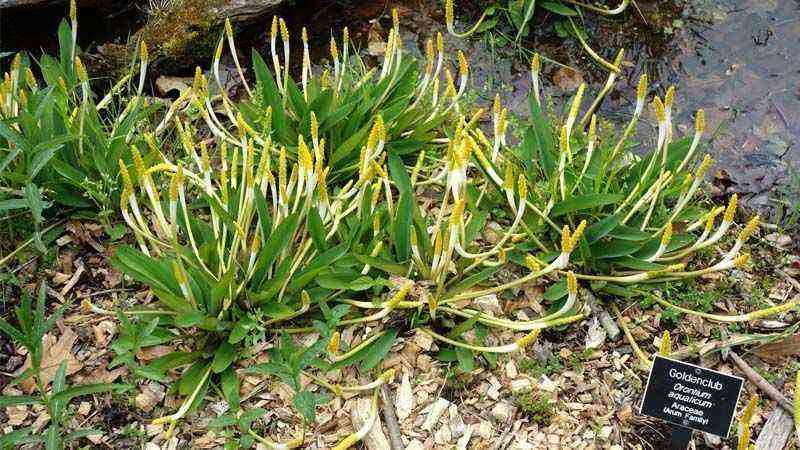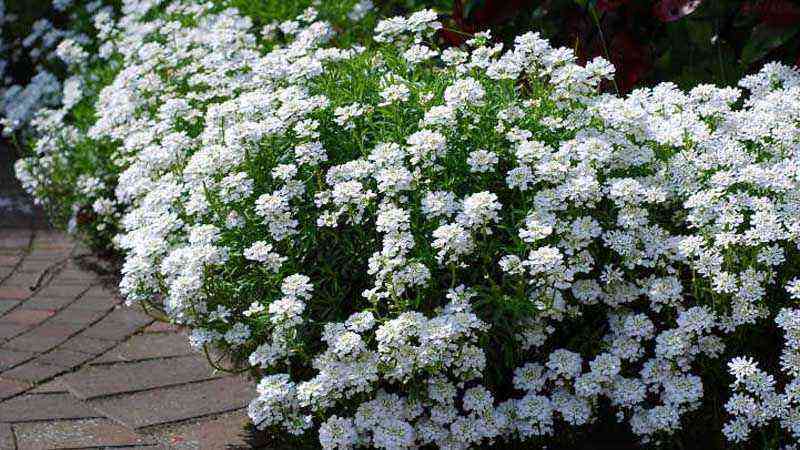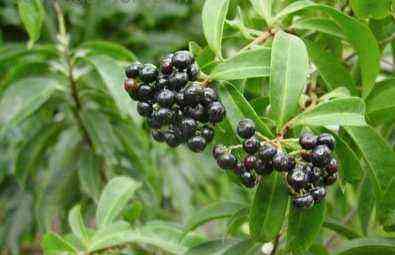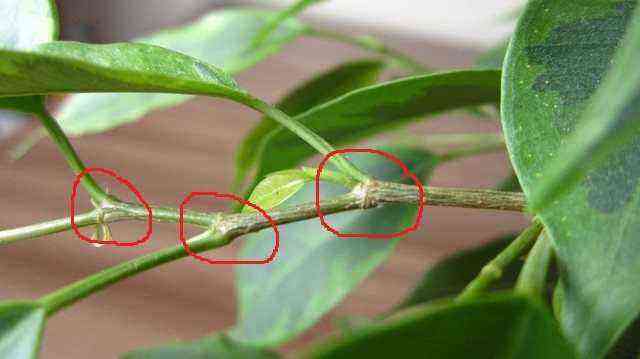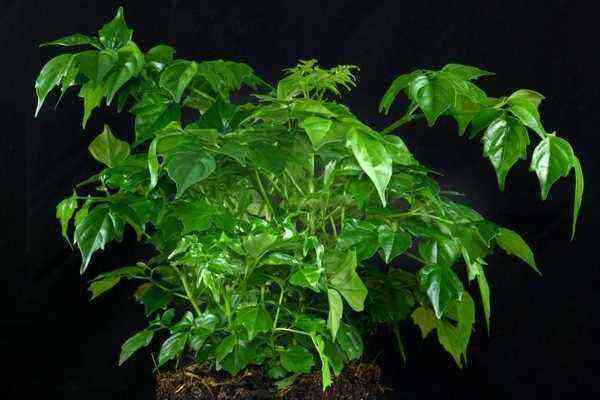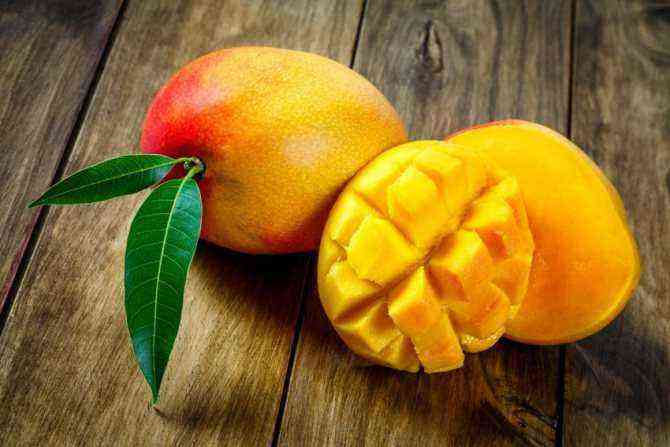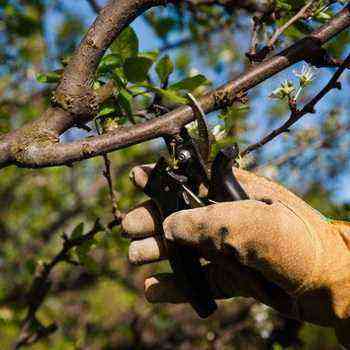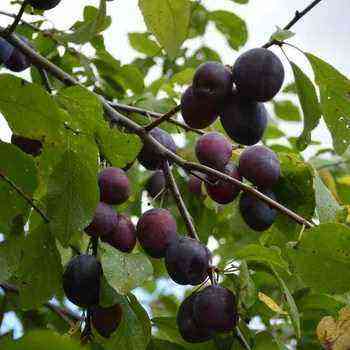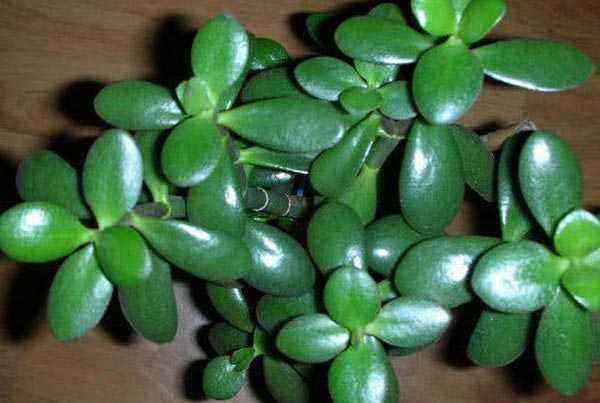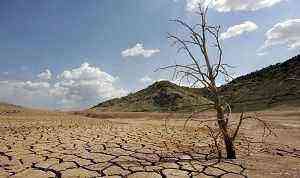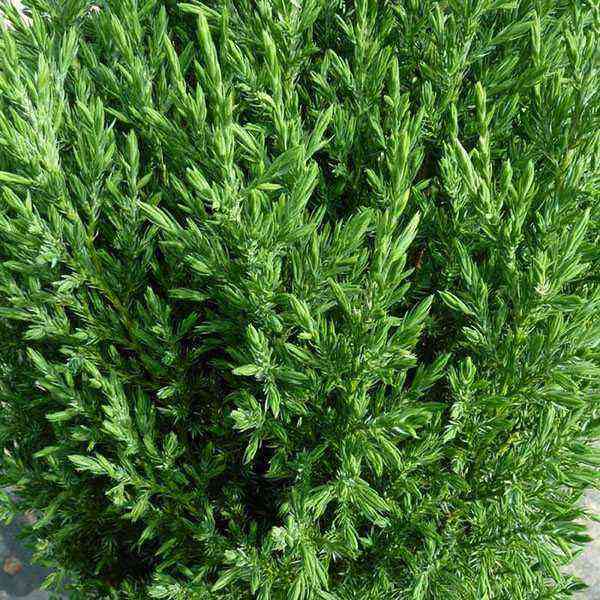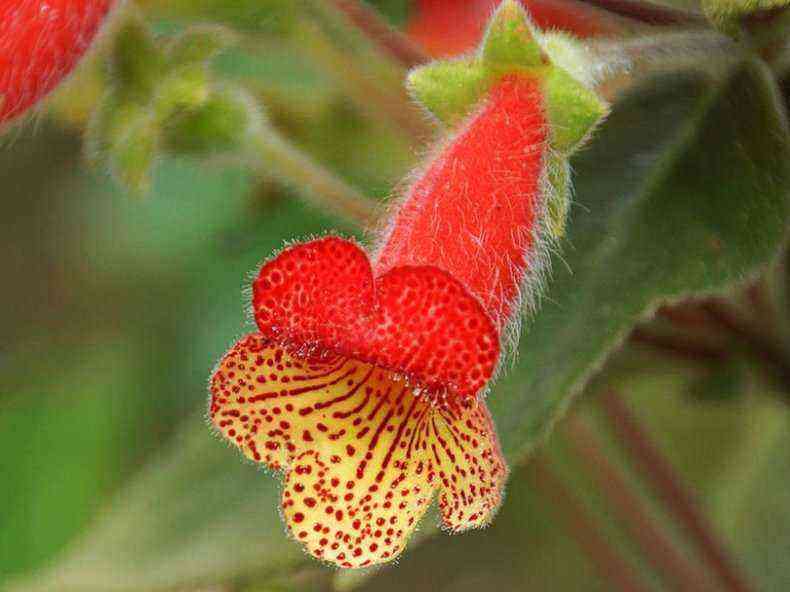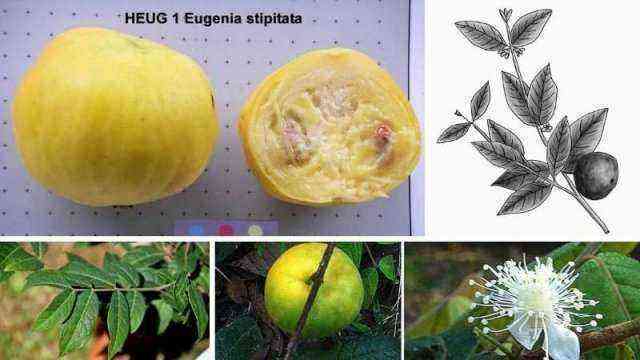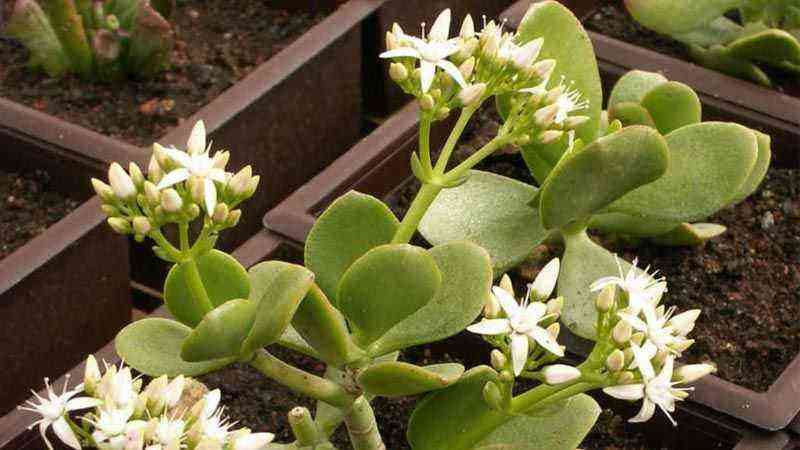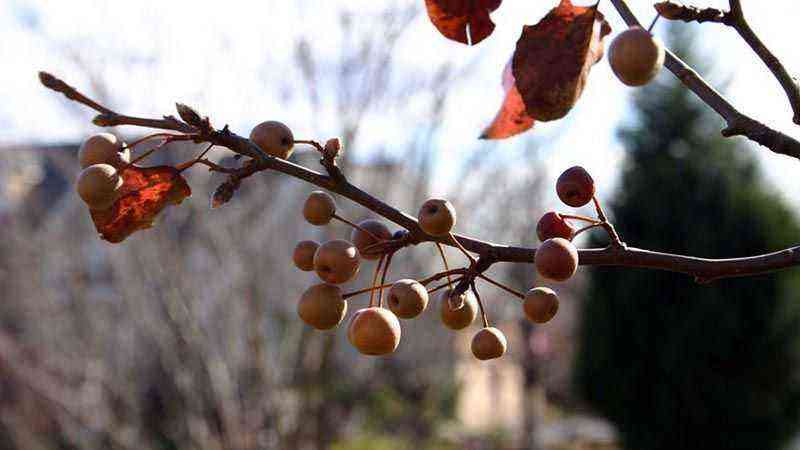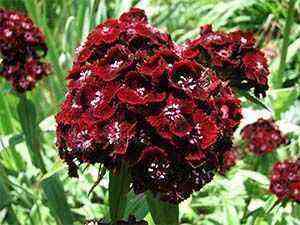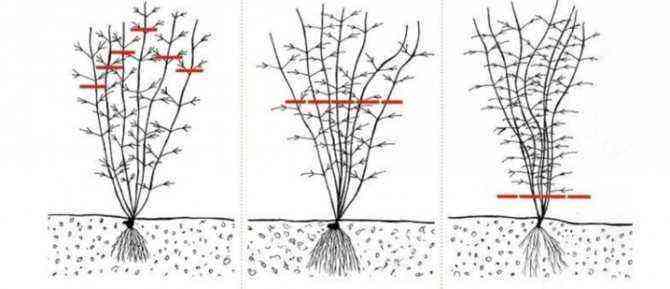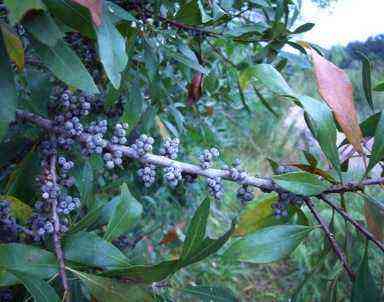Ale
Evergreen conifers are among the most popular in the design of a summer cottage. The most common types of spruce that are well suited for growing in the country are European and prickly.
European spruce in height it can reach up to 30 meters, and in width its crown spreads over 5 meters. The shape of the crown is conical. By the age of 10, it grows slowly, then in a year it can grow as much as 70 cm.

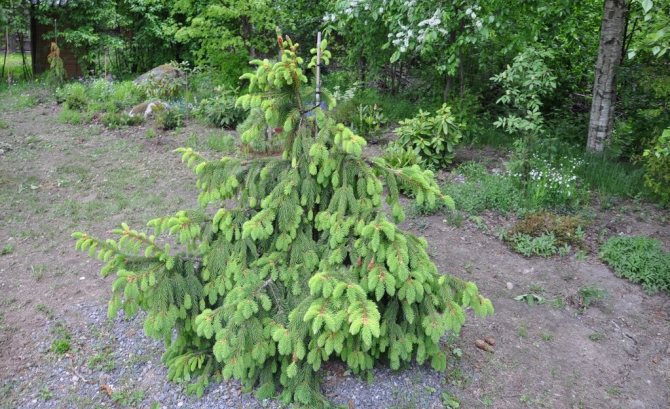
The most popular ornamental varieties of this type are:
- Acrocon – about 3 m high and 4 m wide, has dark green needles, at the bottom the crown spreads widely and narrows significantly towards the top;
- “Inversa” – it is also called weeping, since the branches fall from top to bottom, like a willow; can grow up to 7 m in height;
- “Maxveli” – dwarf variety, has a spherical shape, yellow-green needles, reaches no more than 2 m in height and width;
- “Tampa” – a very beautiful dwarf variety, fascinating with a bright green decorative crown with a light green tint; in height reaches up to 1,5 m, in width – up to 2 m.
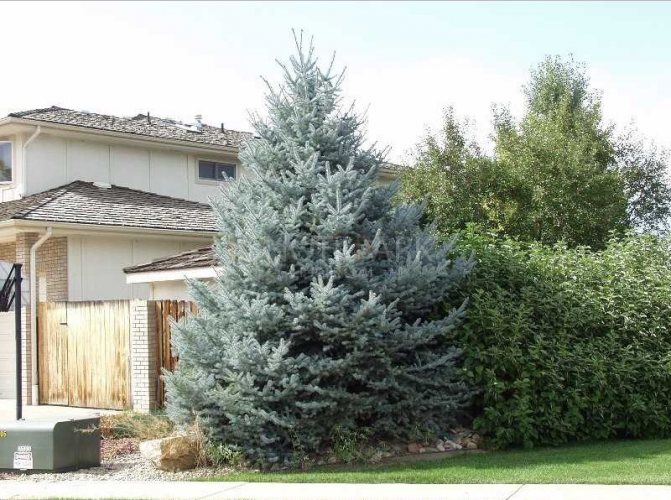

Spruce spicules, in the absence of pruning, it can grow in height up to 25 meters. It has an attractive, low-slung crown. The needles of this species are very sharp, maybe green, blue, gray. Prefers well-lit places, loose, moderately moist soil.
Among the decorative varieties, the most popular are:
- Fat Albert – grows up to 10-15 m, needles are gray;
- “Fastigiata” – blue spruce with a narrow conical crown shape;
- “Guspi” – has a very beautiful bright blue needles. Grows up to 11 m.
The most suitable period for planting seedlings is summer. They love well-drained, loose soil and lighted areas. Common European spruce will also thrive in light shade conditions.
Important! The first two weeks after planting, young seedlings need to be shaded from the sun so that they do not burn out. It is also recommended to cover seedlings of decorative varieties in the fall from future frosts.
Spruce roots do not grow deeply into the ground, but grow in breadth close to the soil surface. Therefore, a distance of at least 3 meters must be maintained between trees. These plants should not be placed next to fruit trees.
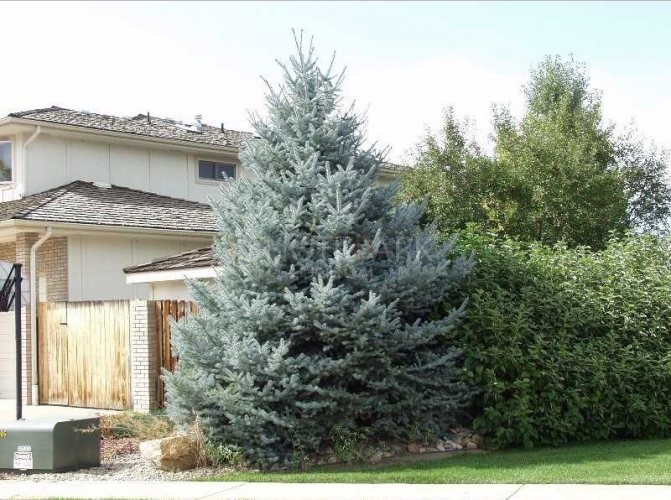

Ate does not like too moist soil, so they should be watered only in drought, once every 10 days. The crown of spruce lends itself well to pruning, so that beautiful shapes can be formed from it.
Basic views
They will give the summer cottage a pleasant look and completeness, and in the period from mid-autumn to mid-spring they will become the main decoration of the territory, delighting with their bright crown. However, in addition to a purely decorative function, evergreens are actively used for zoning space, creating hedges and decorating sculptural compositions and help to solve several important problems related to the technical features of the sites. In landscape design, such evergreens as spruce, pine, cypress, juniper, honeysuckle, fir, boxwood, ivy, yew and thuja are most actively used.
Majestic spruce
Conifers are one of the most popular solutions for decorating a summer cottage of any size with a wide variety of features. European and prickly spruces are considered unpretentious. They are ideal for growing in the country. European spruce can reach a height of up to 30 meters, and the width of its conical crown reaches 5 meters at the base. The first 10 years it grows rather slowly, but then it stretches up to 70 cm annually.
Other decorative varieties popular with summer residents and designers:
- Guspi is a bright blue spruce that grows up to 11 meters in height;
- Fastigiata is a blue spruce with a narrow conical crown;
- Fat Albert is a gray spruce that grows up to 10-15 meters in height.
Summer is the ideal time to root seedlings outdoors. Spruce is planted in loose soil with good drainage. Most species are demanding on lighting, but the common European spruce will take root well in conditions of little shade.
Trees have an extensive superficial root system. The roots do not go deep into the ground, but actively grow in the upper layers of the soil. Therefore, when planting trees, you should leave a space of at least 3 meters between them, placing them not too close to each other. This is especially important when placing spruces next to fruit trees that may suffer from such a neighborhood.
Planting and caring for Blue Star Scaly Juniper
Among other things, these evergreens do not tolerate excess water and swampy soil. They need special watering only during the dry season, about once every 10 days. The crown is very convenient and not traumatic for the plant to cut, forming a neat, symmetrical tree or even a living sculpture.
Charming pine
Pine looks good both alone and as an integral part of alpine slides or a composition of various evergreens (for example, with spruce and fir). It will not be possible to form a hedge from pines, because with age, their needles become less dense, which will not allow growing a dense wall.
The most popular types are common, mountain and cedar. Other well-known pines – Vingirskaya and Weymouth, will take root in areas with fertile land and small winter frosts.
Pines are extremely light-loving plants that are vulnerable to some common types of pests and fungal diseases. To minimize such damage, it is recommended to fertilize the tree roots with mineral additives and treat them with insecticides in time.
Pruning the crown of the pine should be in summer, when the active movement of the sap on the tree slows down. To shorten the branches, you can partially or completely cut them off the trunk.
Lush cypress
The lush cypress hedge is a recognized design classic. Plant height ranges from 1 to 25 meters. The crown, depending on the variety, has a cylindrical or round shape. Cypresses acquire decorative cones, resembling flower buds, already in the second year of growth.
Among more than a hundred species of trees and shrubs, the most popular are: evergreen, weeping, Mexican, Leyland, Saharan and Arizona. The needles of the plant are soft, sometimes there are varieties of beautiful shades of light green and blue.
The fastest growing species is the Leylanda, a column-like species with dense, short branches.
Cypresses are unpretentious plants. They take root well on different types of soil, do not require separate watering, unless there is a prolonged drought. Their only drawback is poor frost resistance. It is most convenient to propagate the plant by cuttings. When forming a hedge or wood sculptural composition, you should prune the crown at the end of the summer season. If the plant is planted in heavy, marginal soil, it is recommended to feed the cypress with a three-component fertilizer annually.
Juniper shrub
Juniper is an excellent ornamental plant widely used in landscape design. Shrubs reach a height of 3 meters, trees grow up to 12 meters. Young junipers are distinguished by their reddish-brown bark, which acquires a characteristic brown hue with age.
Features of conifers for the garden
In addition to its attractive appearance, the juniper is famous for its pleasant smell and decorative green cones. With age, they become grayish and berry-like.
Among all varieties, the most popular, thanks to for their remarkable appearance, they deserve:
- Montana is a creeping shrub about 20 cm in height;
- Mass is a gray-green creeping shrub;
- Columnaris is a beautiful bluish columnar juniper up to 50 cm in height;
- Blue Arrow is a blue-gray columnar juniper.
Junipers do not require cutting or pruning. This is done only if it is necessary to form a hedge out of them and is considered a difficult task that requires accuracy, since the branches grow for a long time. Reproduction takes place by cuttings, layering and seeds.
Evergreen honeysuckle
Honeysuckle is considered to be one of the most beautiful evergreen shrub plants for ennobling the territory. All summer, it is dazzled with numerous crimson inflorescences, and in winter, against the background of snow, it stands out favorably with green foliage.
Honeysuckle is a climbing plant. Its height can reach 3 meters. Lush oval leaves grow up to 5 cm wide, up to 8 cm long. The inflorescences do not have their own aroma, about 5 cm long, similar in shape to tubes, hanging from the stems like bells. Their color ranges from deep pink to crimson on the outside and light yellow on the inside. Some honeysuckle varieties have yellow or bright red flowers. At the end of the flowering period, a large number of small scarlet berries grow.
It is customary to root honeysuckle seedlings in open ground in the spring, as soon as frosts pass into loose soil with sufficient moisture. The plant takes root well in bright areas protected from the wind.
Planting is as follows: a hole is dug about 40 cm deep. A layer of sand mixed with gravel is poured onto its bottom, then a layer of soil. The seedling is placed in the center of the pit, straightening its root system, covered with soil and slightly compacted. It is not recommended to deeply deepen the plant, this can cause the disappearance of the honeysuckle. Ideally, the root collar is level with the ground. In the first two weeks during the adaptation period, the plant should be protected from direct sunlight, creating a shallow shadow for it.
It is customary to cover honeysuckle for the winter. The shrub is resistant to common plant diseases and transplants well. About once every three years, the honeysuckle is thinned out.
Conifers in the landscape design of a summer cottage
Majestic fir
Unlike most conifers, the lush fir retains the beautiful appearance of its lower branches for a long time. The bark is grayish, smooth, and may crack over time. The needles are soft, with rounded ends. The root system is powerful, extending to the deep layers of the soil.
Another distinguishing feature of fir is the upward growth of cones, similar to pine cones. In the same place, on the tree, they disintegrate.
About 50 species and about 200 varieties of fir have now been registered.
Unpretentious boxwood
Boxwood is a longtime favorite of landscape designers, perfect for curbs. It tolerates pruning well, allowing you to create whimsical green sculptures out of itself. Boxwood grows well in shaded areas, but is picky about watering and removing excess moisture from the roots. Saplings take root well from spring to mid-autumn, the main thing is to choose places for them no closer than 40 cm from each other. When digging in the roots, it is recommended to mix the soil with sawdust.
The plant propagates by bending the shoots to the ground.
Liana ivy
Ivy is classified as a climbing liana shrub. It can grow up to 30 meters. The leaves are large, brown, green or yellow, 25 cm long. The plant blooms in autumn with yellow-green small inflorescences. The next spring after planting, black berries ripen on ivy.
With the help of supporting structures and garters, spectacular cascades are formed from the plant, framing fences, gazebos and balconies. The plant prefers rich nutrient soil, a warm climate and good lighting, but it will also tolerate a little shade.
It is best to plant ivy in loose, slightly acidic soil with sufficient moisture. It is recommended to sprinkle the roots of the plant with soil mixed with sawdust.
Low-growing decorative yew
Yew compares favorably with other popular evergreens with its rich dark green needles and decorative cones, similar to bright red small berries. The tree grows for a very long time, there are specimens 3 thousand years old. They take root well on loose soils, tolerate drought and shade normally, and are capricious to gas-polluted air.
In total, there are 8 types of yew, among which the berry yew deserves the greatest love and distribution. On its basis, many decorative undersized varieties were bred, among them the most famous:
- Elegantisima is ideal for the formation of group compositions and hedges. Young trees have white-yellow needles, eventually turning green with golden edging. A 10-year-old yew grows up to 1,5 m in height.
- Semperia – has golden needles, at the age of 10 years it has a height of about 50 cm. Frost-resistant variety.
- Horizontal – light green needles. It grows about one meter high, but the crown grows strongly in breadth.
- Washington – needles with golden edging. It tolerates cutting and cutting ideally, so a decorative crown is well formed from it.
Planting and caring for Pinkie Winky’s panicle hydrangea
Fragrant colored thuja
Thuja has earned its popularity due to its unique aroma and dense crown, conquering thousands of landscape designers and gardeners around the world. There are about a hundred decorative varieties that are striking in their diversity. There are dwarf and tall representatives with needles of green, blue, yellow, gray and their shades. The dense crown is well suited for decorative trims and haircuts. Thuyami decorate paths and alleys, plant dense hedges.
The most convenient and widely used varieties are:
- Bowling Ball – its light yellow needles resemble heather;
- Filiformis – has an uneven crown in the shape of a ball with hanging branches;
- Globoza – has a smooth, rounded crown, good for planting along wide paths.
Evergreen honeysuckle
Honeysuckle is one of the most adorable evergreen shrubs for the garden. Throughout the summer, it blooms with beautiful raspberry inflorescences, and in winter it pleases the eye with rich green foliage.
Honeysuckle bushes – curly, can grow up to 3 meters in height. The plant has wide oval foliage. In length, the leaves reach up to 8 cm, in width – up to 5 cm.Inflorescences are odorless, rolled into a tube and hang from the shoots in the form of bells about 5 cm long. The color of the flowers is mainly dark pink outside, crimson, inside – light yellow. In addition, there are varieties with red and yellow buds. After flowering, small bright red berries form on the shoots.
Young seedlings are planted in open ground in the spring, after the end of winter frosts. The plant loves open, lighted, windless places. The most suitable soil will be loose, moderately moist soil.
For planting, dig a hole up to 40 cm deep (it is recommended to lay a layer of sand and gravel on the bottom, then a little soil mixture). The plant is placed in the center of the hole, the roots are gently straightened, covered with soil and compacted a little. The honeysuckle should not be deeply buried in the ground (the neck of the root must be level with the ground), otherwise it will not grow and may disappear. For the first 14 days, a young seedling should be shaded from the sun’s rays.
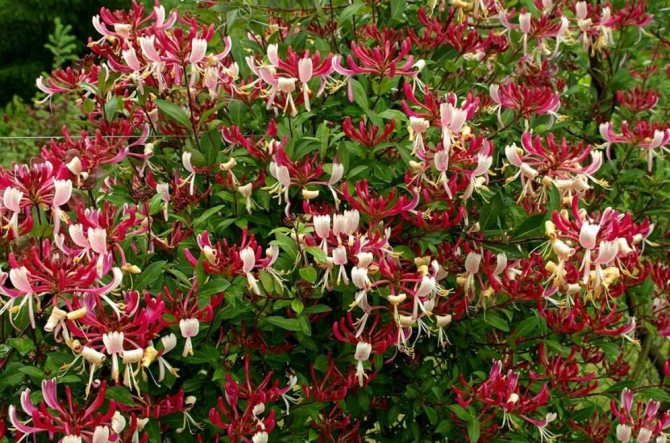
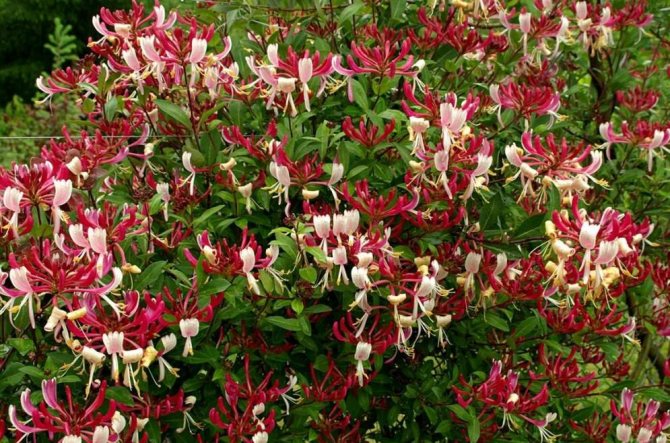
Did you know? In order for the honeysuckle bushes to look decorative and neat, its branches must be tied up, and the old
—
periodically remove to the very roots. With the right garter and strong support, branches of an evergreen bush can be wrapped around a gazebo or a fence.
It is recommended to cover the bushes for the winter. Honeysuckle perfectly tolerates transplantation and practically does not get sick. Shrubs need to be thinned every three years.
Deciduous evergreen ornamental shrubs
Deciduous evergreen shrubs are mainly the prerogative of tropical and subtropical climates. Most of these plants, which grow in the temperate zone, need to be brought into a greenhouse or winter garden for the winter.
But there are some species that can withstand frost and winter without shedding foliage:
- boxwood;
- the honeysuckle is brilliant;
- horizontal cotoneaster;
- mahonia holly;
- rhododendron (some species);
- beresklet Fortuna;
- padub.
In addition to shrubs, there is a large group of ornamental shrubs that do not shed their foliage even in winter. These are all decorative representatives of the heather family – blueberries, lingonberries, heather, erica. Also representatives of the labiate family – lavender, rosemary, thyme. The latter need to be covered for the winter with leaves, shavings or spruce branches.
Deciduous evergreen ornamental shrubs are used in all types of landscape design, from compositions to hedges and topiary.
Cypress
The evergreen cypress hedge just can’t help but captivate the eye. The trees can grow in height from 1 to 25 meters. The crown is round and cylindrical. In the second year of growth, cypresses ripen cones. They have a very beautiful shape and resemble a flower bud.
Today, about a hundred species of cypress trees are known, but the most decorative representatives include:
- Evergreen cypress;
- Leyland;
- Weeping;
- Сахарский;
- Mexican;
- Arizona.
The green needles of cypress trees are soft and pleasant to the touch. In some varieties, the needles have a beautiful light green or blue tint. The fastest growing plant is Leilanda. This tree resembles a “living” column with dense symmetrically arranged branches.
Important! Cypress tolerates only slight shading, and in conditions of full shade, the crown of the tree crumbles.

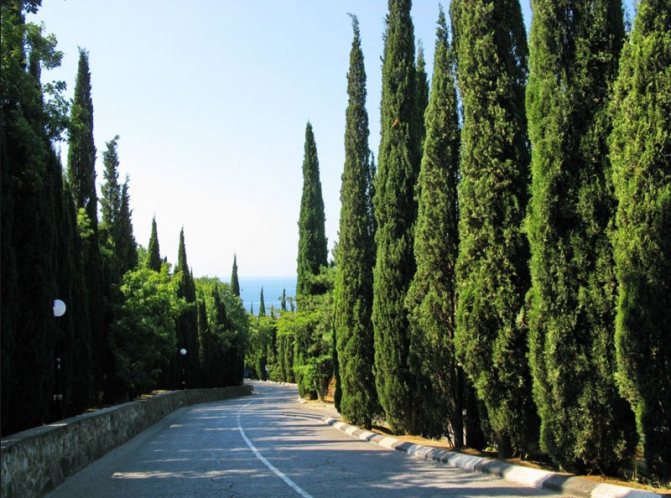
Cypress trees are not demanding on the soil, they withstand drought well, but they do not tolerate frost well. If the drought is long, the tree should be watered. To form neat bushes, pruning is carried out at the end of August. In conditions of infertile, heavy soils, it is recommended to feed cypress with a three-component fertilizer once a year. The best way to propagate is by cuttings.
Juniper
Ornamental bushes for summer cottages can be created using juniper. The shrub forms of the plant reach a height of up to 3 m, tree-like – from 4 to 12 m. Young seedlings have a reddish-brown bark, in adult plants it becomes brown.
Juniper needles are collected in pairs of several pieces. In addition to its beauty, this evergreen plant has an incredibly pleasant smell and very beautiful green cones. In the second year of growth, the cones acquire a grayish color and look like berries.
There are many varieties of juniper, but the most decorative and popular are:
- “Montana” – creeping shrubs about 20 cm high;
- «Columnaris» – Columnar plants up to 50 cm in height, known for beautiful needles with a bluish tint;
- “Blue Arrow” – Columnar shrubs with blue-gray needles;
- “Mass” – creeping shrubs with gray-green needles.
The plant is planted in open soil in April or October. The best place to plant is a lighted area with loose sandy soil. The shrubs are completely unpretentious in care: only watering is required during drought and periodic loosening of the soil. For better growth, you can feed the plant with nitroammophos in the spring.
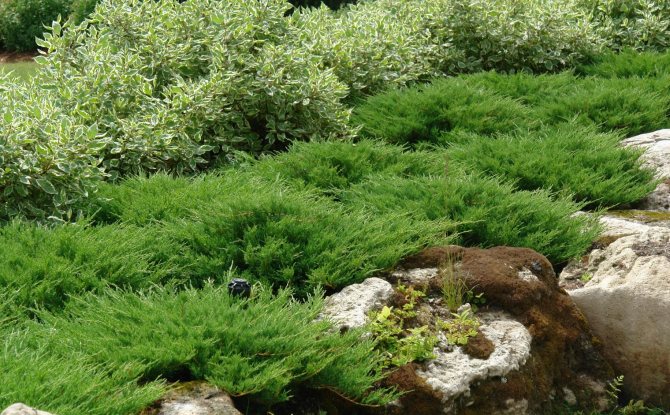
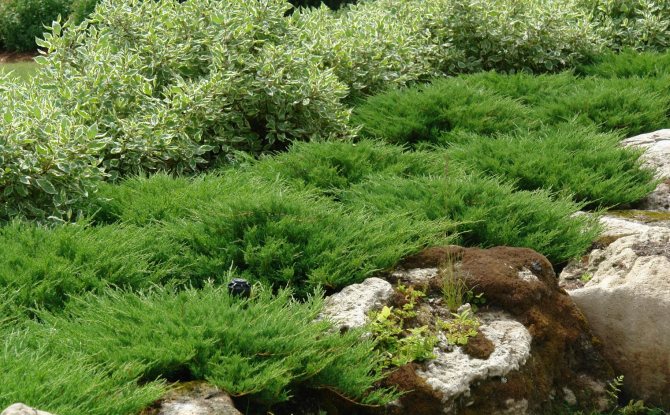
Juniper does not need pruning and this procedure should only be carried out if you want to form a hedge from its bushes. In this case, you need to be very careful, since the branches of the plant grow back for a very long time. Propagated by seeds, cuttings and layering.
Did you know? Juniper needles
—
the leader among antibacterials, and the berries of the plant can be used as a seasoning for meat or fish, as they give them a delicious aroma and piquant bitterness.
Combinations with evergreen trees and shrubs
The multi-colored planted in front of it will help to revive the high green hedge. evergreens
: Juniper “Compressa” and ivy in pots; Fortune’s euonymus; periwinkle and function (host) (host) as ground cover; weeping pea cypress; hybrid sucker, common holly; juniper chinese. Red-leaved barberry interspersed with boxwood in a low hedge can complement the picture.
The prickly spruce is famous for its decorative silver-blue needles, which is why it is called blue spruce. A bright contrast is the blue dwarf spruce with the creeping yellow-leaved euonymus of Fortune. Creeping euonymus can crawl up like ivy. The silvery border of its leaves stands out especially clearly against the background of dark tree trunks.
Holly has shiny dark green leaves with a yellowish-white border that color the tree and garden all year round. In the fall, red berries will also be added, which birds love to feast on. Privet has been known for over 130 years. This shrub with yellowish oval leaves deserves a solo performance.
A variety of evergreens are good for planting in front of deciduous trees and shrubs. In summer, their restrained colors blend harmoniously into the overall color scheme, in autumn they create lovely contrasts, for example, with red foliage or red fruits of other plants, in winter, among bare trees, they generally become the main decoration of the garden.
Yellow, white and silvery leaves (especially needles) significantly enliven the dark corners of the garden. Here, first of all, various varieties of evergreen creeping spindle tree are suitable as ground cover. For taller plants, holly varieties that can grow in a shady area are suitable. Ivy and some varieties of euonymus, for example, “Emerald” s Gold “and” Variegatus “, will climb up the walls and supports. They are especially effective against the background of the dark bark of tree trunks. Climbing on a pergola or trellis, they form a good protection from the wind and prying eyes.
Variegated evergreens are not only suitable for mixed group plantings.
They are no less interesting as soloists, especially if they differ in an unusual form of growth, for example, columnar or weeping. The color of a particular variety is often clear from its name. For example, if the name contains the word “Aurea” or “Gold”, we are talking about a yellow-colored variety, the word “Glauca” is typical for blue varieties, and “Varigata” and “Maculata” for variegated silvery-green varieties.
Fir
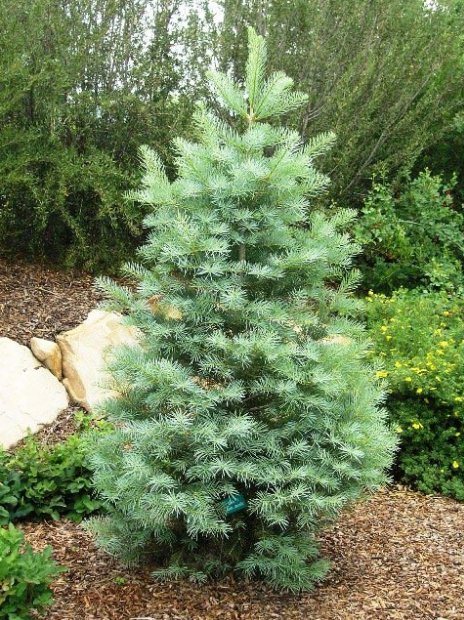
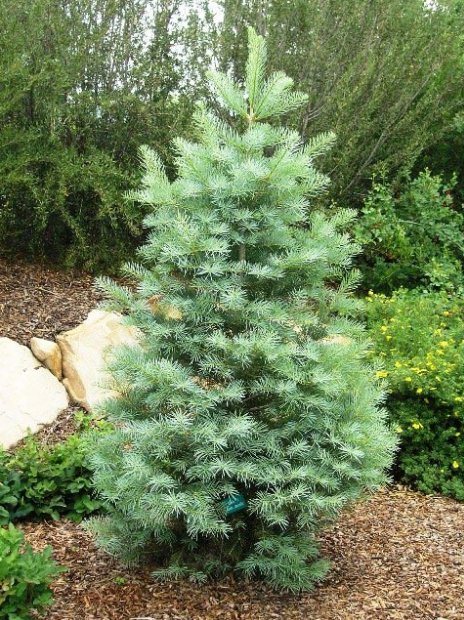
This beauty bewitches the eyes with a slender trunk and a lush crown in the form of a cone. Unlike other conifers, fir for a long period retains the decorative effect of the lower branches. The bark of plants is smooth, grayish, in some species it can crack in old age. The needles are soft, with rounded ends.
A distinctive feature of fir from other coniferous representatives is that its cones grow upwards, like cedars, and decay on a tree, and powerful roots go deep into the ground. In total, there are about 50 species and more than 200 varieties of fir.
The most interesting and decorative representatives include:
- Arizona;
- Balsamic;
- Single color;
- Korean fir.
Arizona fir in height it can reach up to 15 m. Its bark is creamy, and ripe cones have a deep red color, needles are bluish-gray. Cultivated plant varieties reach no more than 7-8 m in height and are often used in rock gardens, heather gardens.
Balsam fir grows from 15 to 25 m. The bark is smooth, brown, the needles are dark green in color with thin white stripes, the cones are purple. Today there are 20 types of decorative varieties of this species. A very popular dwarf variety “Nana”, which reaches up to half a meter in height (in 10 years) and up to 1 m in width. The needles have a charming emerald hue. Another dwarf variety of fir – “Kiwi”, stands out with a beautiful dense, green-blue crown.
Cultural form monochromatic fir reaches a height of 8 m. The bark is grayish, smooth, the needles are gray-green, slightly twisted upward. It has about 30 varieties. The most interesting of these are the Archers Dwarf dwarf variety with a dense blue crown and Wintergold, with yellowish needles in young plants, which change their color to green with age.
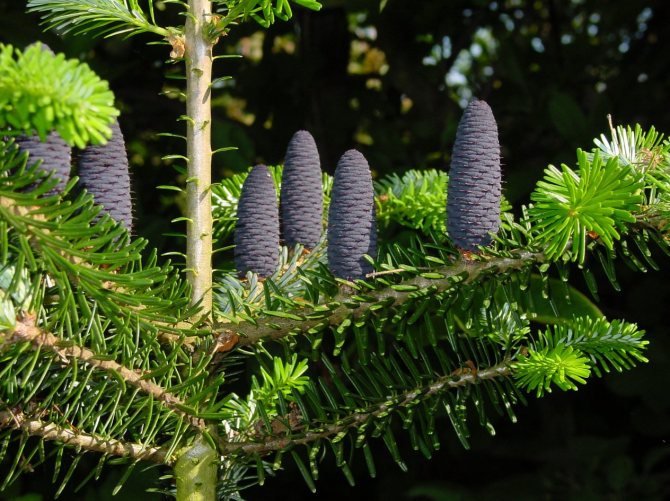
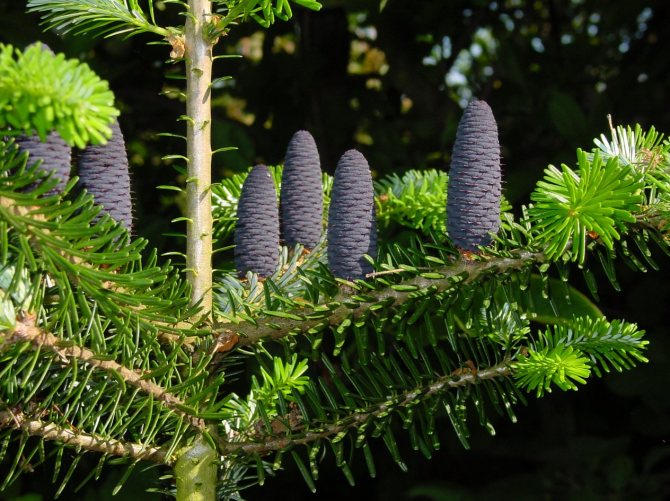
Very beautiful varieties of Korean fir:
- Blue Magic – dwarf variety with charming blue needles and lots of blue little cones;
- “Eskimo” – with a gray-blue crown, which looks like a pillow, and thanks to the chaotically located branches, such a fir is also called a “witch’s broom”;
- “Tower” – grows up to half a meter, has a beautiful pale green crown, which is slightly flattened on top;
- “Molly” – dark green shrub, reaching a height of up to 30 cm.
Fir is best planted in April or September. Young seedlings, after planting, are recommended to be shaded from the sun for some time. Loves lighted places, moist soil. However, it does not tolerate stagnant water. Therefore, the soil must be loose. When planting, do not bury the root too deeply in the ground – its neck should be flush with the soil. The top layer of soil, with which the rhizome is sprinkled, is recommended to be mixed with sawdust and peat for drainage. During periods of drought, the tree needs to be watered.
Important! By the first year of wintering, the plant must be covered with coniferous spruce branches. The young seedling is still weak and may not tolerate large frosts.
Dwarf conifers
Dwarf evergreens have different crown shapes, which allows you to create original compositions in the garden. Dwarf plant varieties reach a height of no more than 1-2 meters, in contrast to tall conifers in the forest, the height of which can reach 50 meters. Dwarf conifers are the best option for a small garden. If the area is large, then you can plant blue spruces and ship pines. Of the popular low-growing conifers for the garden, the following types are chosen:
- Thujia the Western
- Balsam fir
- Serbian spruce
- Tis berry
- Red cedar
- Lawson’s cypress
- Pine mountain
These evergreens can be planted individually or combined from different varieties and species. Especially popular among conifers of short stature are: thuja, spruce, fir, juniper.
Ivy
Ivy refers to liana-like climbing shrubs. It can reach a height of 30 m. Ivy foliage is large, about 25 cm in length, it can have a green, yellow, brownish color. In autumn, the plant blooms with yellow-green umbellate small inflorescences. The next spring, after planting on ivy, black berries form.
Did you know? When rubbed, ivy leaves give off a nutmeg smell. Due to this property, they are used in cooking as a spice or decoration.
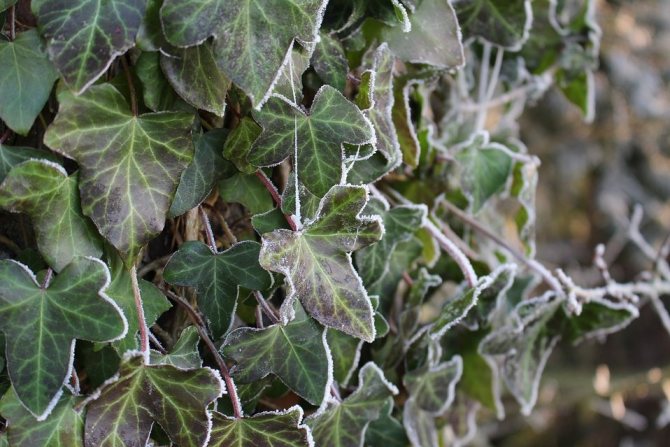
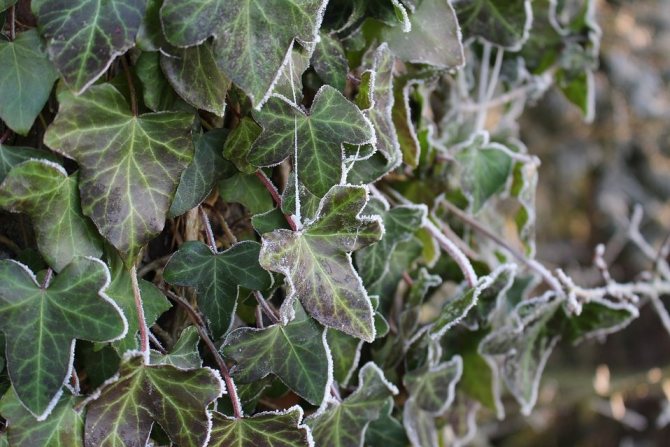
Ivy grows for a long time and looks very impressive at the same time. With the help of supports and a garter, you can form beautiful cascades from it, hanging from parkans, fences, balconies, a living evergreen gazebo or even a canopy. The plant tolerates shade well, but develops best in illuminated areas. Loves warmth and fertile soil. Ivy is propagated, most often by cuttings.
There are a large number of decorative forms of ivy, and the most popular are:
- winter – stands out with very large, wide, light green foliage;
- Baltic – the most frost-resistant variety, has small leaves of rich green color;
- treelike – is a small upright shrub with beautiful green leaves with silvery spots;
- trichromatic – in autumn, the leaves at the edges acquire a charming bright red color;
- bordered – it is distinguished by the fact that the foliage at the edges is framed by a yellow stripe, which in the fall changes color to red or pink.
Ivy loves moist, loose, slightly acidic soil, but it is especially undemanding to the composition of the soil. The top layer of earth, which will be sprinkled with the root of the plant, is recommended to be mixed with sawdust and peat.
Samşit
Boxwood is an ideal curb evergreen, often used in site landscaping.

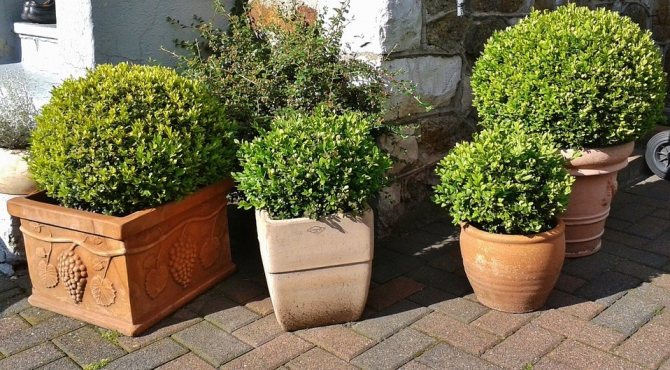
Its benefits also include:
- good tolerance to pruning;
- the possibility of good growth in dark areas;
- the ability to form a wide variety of shapes.
The main conditions for the good development of boxwood are timely watering and drained soil. Saplings can be planted from spring to mid-autumn. It is important to maintain a distance of at least 40 cm between them. It is recommended to mix the ground for dropping seedlings with sawdust and peat. The best way to propagate boxwood is by bending the shoots to the ground.
Important! The leaves of the plant are poisonous, so in no case should they be eaten. After working with boxwood, be sure to wash your hands.
Boxwood is exactly what you need if you want to shape shapes from evergreens. With the help of a dense crown and a large number of branches, you can make a perfectly flat surface. Complex multilevel shapes are formed using wire frames. The most suitable varieties for this purpose are “Green Gem”, “Suffruticosa”.


Garlanda boxwood is ideal for making bonsai. For the formation of hedges, such varieties as “Latifolia”, “Rotundifolia” are perfect. With their help, you can create any shape – cones, ovals, cubes, rectangles.
Important! Boxwoods often freeze, but to prevent this from happening, in the fall the soil needs to be mulched with needles, and tall plants should be covered with burlap.
IN SEARCH OF SENSE
Someone may ask why plants with wintering foliage should be grown, if you do not have to admire them anyway: some of them will be under cover in winter, others under snowdrifts. First, they are all remarkably good in the season.
Secondly, in the late autumn, when the site usually looks utterly dull, their frost-covered foliage becomes the main ornament of the garden. And finally, in the spring, when the snow descends reveals the naked unpresentable land, they greet us with the living greens of the overwintered leaves, like a detachment of pioneers, followed by an army of greens.
© Author: M. YURASOVA
ORDER QUALITY AND CHEAP SEEDS AND OTHER PRODUCTS FOR HOME AND COTTAGE. PRICES ARE BOTTLE. CHECKED! JUST LOOK FOR YOURSELF AND BE AMAZED. THERE ARE REVIEWS. GO >>>
Below are other entries on the topic “Cottage and garden – do it yourself”
- Ornamental evergreen shrub? Small-leaved cotoneaster !: Choosing an evergreen ornamental shrub Choosing an evergreen …
- How to cut shrubs correctly: Cutting and shaping shrubs – …
- Do-it-yourself decorative flower bed: How to make a decorative …
- What plants to plant to decorate patio gardening: Plants for patio: decorate in …
- What to plant around the gazebo: Plants for framing the gazebo A gazebo in …
- Garden composition with a pond in the country – choosing plants: Plants for the pond and creating …
- Agapanthus flower – tips for growing and care. Photos and several beautiful varieties .: Agapanthus plant: varieties and care …
Subscribe to updates in our groups and share.
Pine
Pine trees in landscape design are great for single plantings, combining with other evergreen trees (fir, spruce, larch) or alpine hills, and excellent “living” rows are obtained from cedar stalnik pines. For the formation of dense hedges, pines are not suitable, as the needles thin out over time and will not allow creating a dense monolithic wall.
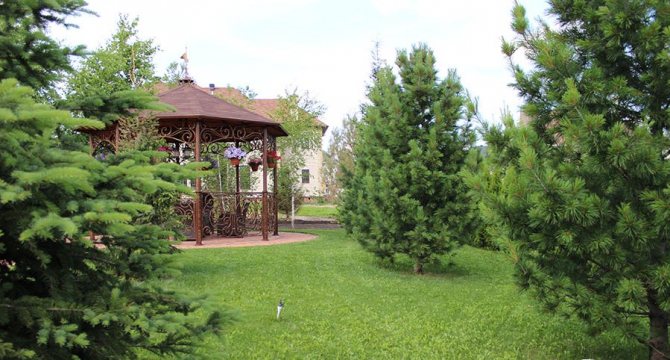
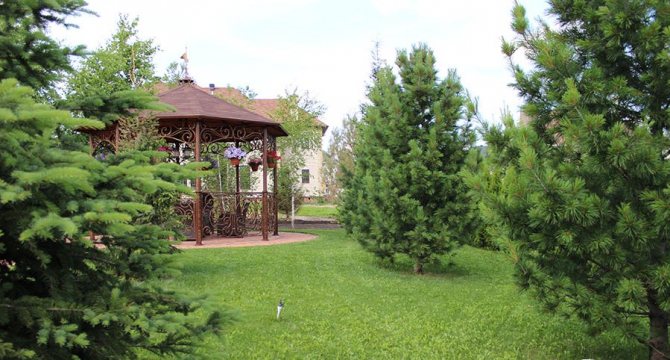
Mountain, cedar and common pines are considered the most suitable for cultivation. Weymouth and Wingir varieties are suitable for regions with light frosts and fertile soils.
The crown is formed by circumcision. It should be carried out in the middle of summer, after the active movement of the sap in the tree ends. Branches can be cut completely or in the middle. Pruning is not recommended in spring and autumn.
Did you know? If you want more lateral shoots to develop, and the main ones are shorter, pinching should be done in the spring. During it, the buds are cut off at the tops.
The most unpretentious and frost-resistant is mountain pine.
Today there are quite a few of its decorative undersized varieties:
- Mugus (a beautiful decorative pine tree, up to 2-3 m high, has a bright green crown with a light green tint);
- “Ofir” (has a dense crown with a yellowish tinge);
- “Varella” (it has a very beautiful long needles of a rich green color, beautiful fluffy balls can be formed from its crown);
- «Winter Gold» (it is distinguished by sharp needles of yellow-green color).
Pines love light and are very vulnerable to aphids, bark beetles and worms. Therefore, if such enemies are identified, the plant should be immediately treated with appropriate insecticides. In addition, these evergreens do not tolerate fungal diseases well. To increase the resistance of plants to fungal diseases, it is recommended to feed them with complex mineral fertilizers.
Yew
A distinctive feature of these evergreens is the flat, dark green needles and red small cones that look like berries. It grows for a long time, but it can easily live up to 3 thousand years.
Perfectly tolerates shade, does not like gassed air. Grows well on loose soils, tolerates drought well.
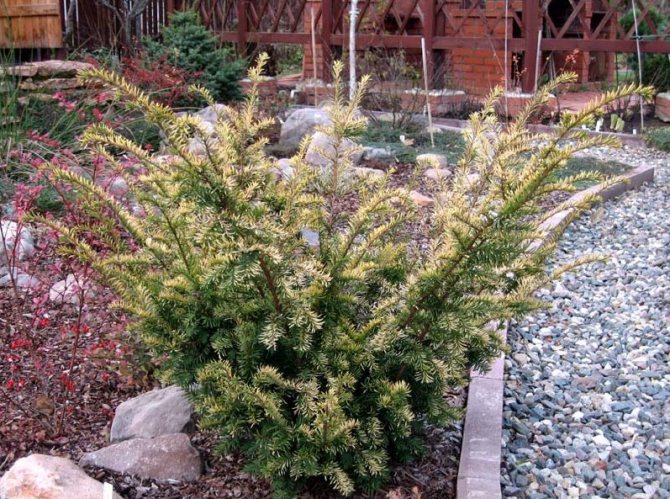
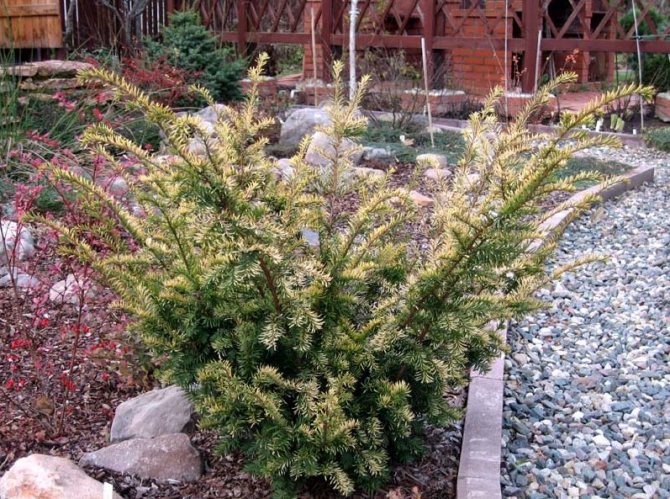
Important! Cones, needles and bark of yews contain toxic substances. In no case should they be eaten. After planting, caring for the tree, touching it, be sure to wash your hands well. It is recommended to exclude contact with the plant of children and pets.
Eight types of yew are known. The most popular is berry yew, and today a large number of its undersized decorative varieties have been bred:
- “Elegantisima” – perfect for the formation of hedges and group plantings, a ten-year-old plant reaches a height of one and a half meters, young plants are interesting with white-golden needles, which with age change to green with a yellow border;
- “Semperia” – a frost-resistant variety with bright golden needles, at the age of 10 it grows up to only 50 cm;
- “Horizontal” – the crown of this yew grows very broadly, and reaches a height of only 1 meter, the needles are light green;
- “Washington” – has a beautiful curved green needles with a golden border.
Yew tolerates cutting and pruning well, therefore it is suitable for the formation of a decorative crown.
Thuja western: characteristics of the plant
This evergreen plant belongs to the Cypress family. Thuja is unpretentious to the soil and is frost-resistant. The shape of the crown is oval. The following dwarf varieties of thuja western are distinguished:
- Yellow Ribon variety. Has a conical crown. The variety differs from other species in bright yellow shoots, which makes a low tree attractive among other plants.
- Grade “Globoza”. It grows slowly, adding up to 5 cm per year. Thuja shoots are flat, grow evenly to the sides. Scaly needles turn light green in spring and gray-green and brownish in winter.
- Variety “Teddy”. This variety has thick, thin shoots and needles. The plant does not exceed 0,3 meters in diameter. The needles are green with a bluish tint in summer and brownish in winter.
- Grade “Golden Globe”. The needles change their color throughout the year: in the fall they are brown, and in the spring they are yellow. It grows 5-10 cm every year.
Thuja western grows well in sunny places. Can be planted in a slightly shaded area. Dwarf evergreens require mineral fertilization, mulching and timely watering.
